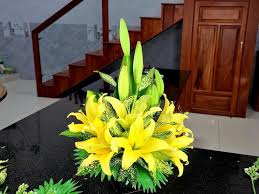Why Caja China Has Become the Go-To Choice for Outdoor Parties

When it comes to outdoor gatherings, whether it’s a backyard BBQ, a family reunion, or a festive celebration, the quality of the food is often the highlight of the event. In recent years, Caja China has emerged as a popular choice for cooking meats at outdoor parties, and for good reason. This traditional Cuban cooking method has captured the attention of grilling enthusiasts, caterers, and families alike, offering a unique, flavorful way to prepare large cuts of meat for groups. From its impressive cooking ability to its cultural history, there are numerous reasons why Caja China is the go-to option for outdoor cooking.
In this article, we will explore the reasons why Caja China has become a staple for outdoor parties and gatherings, detailing the benefits it offers in terms of cooking style, versatility, and the experience it creates. Whether you are planning your first event or looking for ways to elevate your outdoor cooking, the Caja China may be exactly what you need to impress your guests.
1. Unique Cooking Method That Delivers Flavor
One of the most compelling reasons for the growing popularity of Caja China is its unique method of cooking. The Caja China, which translates to “Chinese box” in Spanish, is a roasting box that has been traditionally used in Cuban cuisine to cook whole pigs. This box-style cooking method uses charcoal placed on top of the box to cook the meat from above. The heat is radiated down through the box, slowly cooking the meat to perfection.
This process imparts a distinct smoky flavor to the meat, resulting in a deliciously tender roast with crispy skin. The method is often referred to as “indirect heat” cooking, where the heat surrounds the meat and cooks it evenly, ensuring it remains moist and juicy. It’s this combination of tenderness and smoky flavor that makes Caja China an irresistible option for outdoor events.
Unlike traditional grilling, where the meat is exposed directly to flames, the Caja China offers controlled, indirect heat. This is especially beneficial when cooking large pieces of meat, such as a whole pig or a large cut of beef, which require slow roasting for hours. The result is a perfectly cooked, melt-in-your-mouth roast that is hard to replicate with other cooking methods.
2. Perfect for Large Groups and Events
Another reason why Caja China has gained popularity for outdoor parties is its ability to cook large quantities of meat at once. A Caja China can easily accommodate a whole pig, lamb, or even multiple cuts of meat simultaneously. This makes it an excellent choice for large gatherings, where feeding a crowd of people quickly and efficiently is essential.
The versatility of the Caja China also means it can be used for different types of meat, from pork and beef to poultry and even fish. This allows party hosts to offer a wide variety of meats for their guests, making it possible to cater to different tastes and dietary preferences. Additionally, the ability to cook multiple meats at once frees up time and space for other tasks, such as preparing side dishes, drinks, or desserts.
Whether you are hosting a backyard BBQ, a birthday party, a wedding reception, or a family reunion, the Caja China can help streamline the cooking process while delivering exceptional flavor. For large parties where you might otherwise need multiple grills or smokers, the Caja China offers an all-in-one solution that is both efficient and effective.
3. Easy to Use and Minimal Supervision Required
Another factor that contributes to the Caja China’s popularity for outdoor gatherings is how easy it is to use. Unlike some traditional grilling methods that require constant monitoring and flipping, the Caja China requires minimal supervision once it’s set up. After preparing the meat, you simply place it in the box, cover it, and light the charcoal. From there, the Caja China does the work, cooking the meat evenly with minimal intervention.
The top layer of charcoal generates a steady and controlled source of heat, so the meat slowly roasts over time. The best part is that the Caja China doesn’t need to be constantly attended to, freeing you up to focus on other aspects of the party, such as entertaining guests, preparing side dishes, or organizing games and activities.
This easy-to-use nature makes the Caja China especially attractive for people hosting outdoor parties who want to ensure the meat is cooked properly without having to be a grill-master. It also makes it ideal for beginners who may not be familiar with grilling or smoking techniques but still want to impress their guests with a delicious and unique meal.
4. Convenient for Outdoor Cooking
Hosting an outdoor party often involves dealing with unpredictable weather, outdoor cooking equipment, and limited space. The Caja China is designed specifically for outdoor use, and its portable nature makes it convenient for use in a variety of settings. It can be set up on a patio, in a backyard, or even at a park for a picnic-style BBQ. It’s also relatively compact, meaning it can be transported to various locations, making it a flexible option for parties, picnics, and tailgates.
Since the Caja China doesn’t require an open flame, it’s safer than traditional grilling methods that might involve risky flare-ups or excessive smoke. This is especially beneficial in areas with strict fire regulations or during windy conditions when controlling an open flame can be difficult. Furthermore, because the Caja China is a closed system, the smoke is contained, meaning it’s less likely to cause irritation or inconvenience for your guests.
This combination of convenience, portability, and safety makes the Caja China an excellent option for outdoor cooking in any environment, whether you are hosting an intimate gathering in your backyard or a large-scale event in a public park.
5. Cultural Experience and Conversation Starter
Beyond its practical benefits, the Caja China also offers a cultural experience that can be a great conversation starter. As a traditional Cuban cooking method, the Caja China brings a unique touch to any outdoor gathering. Many people have never encountered this method of roasting before, and the sight of a whole pig or large cut of meat slowly roasting in a box is both impressive and fascinating.
When you serve food cooked in the Caja China, it’s not just about the flavors; it’s also about the experience. Guests will be intrigued by the method and may ask questions about how it works and where the technique originated. This can create a fun, engaging atmosphere that adds a cultural layer to your event.
Additionally, the Caja China often evokes memories of traditional Cuban and Latin American celebrations, making it a great way to introduce guests to a new culinary tradition while celebrating the joys of communal dining and outdoor cooking.
6. Exceptional Flavor and Tenderness
The Caja China produces meat that is incredibly tender, juicy, and flavorful. Unlike other methods of outdoor cooking, such as grilling or smoking, the slow-roasting process in the Caja China allows the meat to absorb all of the flavors from the seasoning, smoke, and heat. This results in a melt-in-your-mouth texture and a deep, rich flavor that is difficult to replicate with other cooking methods.
The beauty of the Caja China lies in its ability to maintain moisture in the meat while still producing a crispy exterior. This is particularly important when cooking large cuts of meat, such as a whole pig, which has a tendency to dry out when cooked over direct heat. The Caja China ensures that the meat is cooked slowly and evenly, which prevents it from becoming tough or dry.
For party hosts looking to offer their guests a truly exceptional meal, the Caja China delivers flavor and tenderness in spades. The mouthwatering aroma of roasted meat wafting through the air is sure to leave your guests eagerly anticipating their first bite.
7. Ideal for Socializing and Outdoor Fun
Lastly, one of the best aspects of using the Caja China for outdoor parties is the social aspect it encourages. Because the cooking process is relatively hands-off, guests can gather around the Caja China, watch the meat cook, and engage in lively conversation while the food is prepared. This creates a sense of camaraderie and shared experience, which is at the heart of any great party.
Additionally, the Caja China is ideal for outdoor events where there is plenty of space for games and activities. While the meat roasts, guests can enjoy lawn games, play music, or just relax and mingle. Once the food is ready, everyone can come together to enjoy the fruits of their labor.
Conclusion
The Caja China has become a popular choice for outdoor parties because it offers a unique, flavorful, and easy way to prepare large quantities of meat for guests. Its ability to slow-roast meat while preserving moisture, creating crispy exteriors, and infusing smoky flavors makes it the go-to option for many outdoor gatherings. Whether you’re hosting a BBQ, family reunion, or wedding celebration, the Caja China provides an impressive and unforgettable cooking experience that will elevate any event. Its cultural significance, ease of use, and exceptional results make it a must-have for anyone looking to create memorable moments and delicious meals at their next outdoor party.









